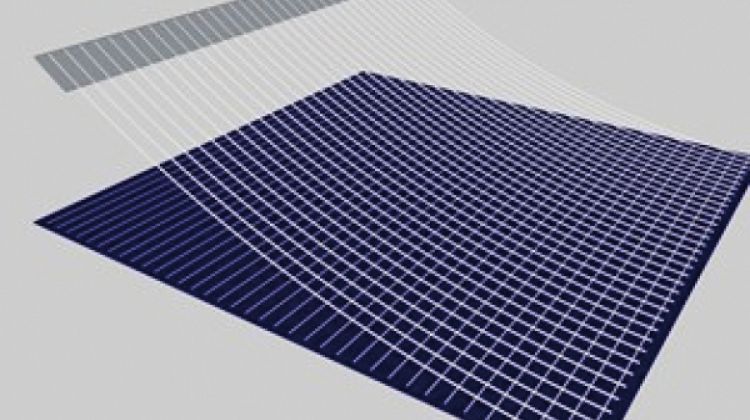Industry Trends in 2019
1. The scale of the PV industry has risen steadily, and distributed generation has become the focus of development.
In 2018, solar PV had delivered about 110 gigawatts (GW) of installations worldwide, which was a record high, with a year-on-year growth of 7.8%. China had seen an installation of 41GW, with a year-on-year decline of 23%, but still ranked 1st in the world.
As we look forward to 2019, the global PV market will remain on a high level driven by factors such as favorable policies, rapid growth in emerging markets, and continued decline in the cost of PV power generation. It is expected that this year solar PV will deliver 105GW of installations worldwide, with China accounting for 35GW to 40GW.

2. With technological advances, production costs will reduce step by step.
In 2018, due to the downturn in the industry in the past few years, many PV enterprises pushed for constant improvement to the operation. Driven by differentiated competition and the construction of leading photovoltaic bases, key enterprises increased investment in process research and development (R&D) and technological transformation, which contributed to the improvement of technologies and the quality of products. The average conversion efficiency of ordinarily structured polycrystalline silicon solar cells produced in China was 18.7%, while the average conversion efficiency of monocrystalline silicon solar cells was 20.3%, both of which were in the lead. When it came to new solar module technologies, light harvesting stings (LHS), half-cut (HC), multi-busbar (MBB), and large silicon wafers have seen wide applications in the industry, significantly reducing the cost of PV modules on a per-watt basis. At the same time, thanks to the large-scale application of diamond wire sawing and thin film batteries, silicon consumption has dropped significantly. Besides, the production of polycrystalline silicon has entered the stage of economies of scale, and the general quantity is more than 10,000 tons. Propelled by technological progress like the optimization of the layout of production and the pressure reduction of raw materials, the production costs of solar modules have dropped to 1.2 yuan per watt, and there is still room for decline. Cost-effective floating solar photovoltaic products with excellent performance and top-notch quality have made great contributions to the development of the global PV industry.
Looking forward to 2019, as future technological advancement will remain the theme of industrial development, there will be an increasing market demand for high-efficiency solar cells and batteries in solar PV industry. It is estimated that both the conversion efficiency of P-type PERC single crystal solar cells and that of N-type PERT ones will exceed 22%, and the power of mainstream products and modules will reach 310W or more. Traditional solar cells will gradually be replaced by high-efficiency cells featuring PERC cell technology. Plus, light harvesting stings (LHS), half-cut (HC), multi-busbar (MBB) and other new solar module technologies will dominate the market as double-sided solar cells did before. It is also expected that the shipments of solar cells will hit 10GW in 2019. The production costs will also be further reduced to 1 yuan per watt. What's more, inverters are expected to cost 0.1 yuan per watt. As a result, the overall cost of investment of some PV projects is anticipated to drop to 4 yuan per watt, and the cost of power generation in certain areas will be lower than the benchmark price of desulphurized coal, thus achieving the parity from the aspect of power generation.

3. As the scale of production continues to increase, the solar PV industry will bottom out.
In 2018, the global production of polycrystalline silicon was negatively affected by the PV market. The output was only 430,000 tons, falling 2.7% year on year, for the first time in nearly 20 years. However, electronic polysilicon was in short supply but in great demand because there was an increase in the price of semiconductor silicon wafers, with a year-on-year growth of more than 10%. There are about 19 polysilicon start-ups in China, with a production capacity of 270,000 tons, a production of 253,000 tons, a year-on-year increase of 4.5%, and an import volume of 120,000 tons. On the other hand, influenced by the downstream market of solar PV, the price of polysilicon products fell rapidly. Some companies turned gains into losses, others started to stop production or even go bankrupt. Global production of solar PV modules continued to grow to 120GW. China accounted for 82GW, with a year-on-year increase of more than 9%. The country's export volume is around 40GW, accounting for about 50%, with an increase of nearly 27%.
In 2019, considering the slowdown in the growth of global solar PV market, technological progresses made in silicon wafers and solar cells, and the decline in silicon consumption per watt, the market demand for polycrystalline silicon will continue to decline, with an anticipated demand of 410,000 tons. Under the background of fierce market competition, industrial differentiation will be further intensified. Polysilicon enterprises in the northwest region gain a competitive edge as they have lower energy cost and achieve economies of scale, compared with those in the central and eastern regions where some enterprises will face greater pressure. In terms of solar cells and modules, with the overall improvement of the PV industry and the decline in the price of PV modules, the cost of photovoltaic power generation is reduced to achieve parity with online cost. It is expected that global production of modules will continue to increase, and will remain at around 120GW throughout the year. Solar PV modules installations in Mainland China are expected to exceed 80GW, and industrial concentration will be further improved. (Editor: Claire Jeawin)